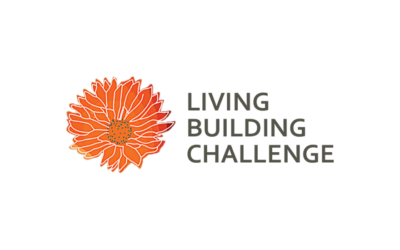By: Anna Musun-Miller
When I first heard about the Moonshot Museum, I was excited to learn about what I thought it was – a new, small museum doing interesting work in STEM education in Pittsburgh. Little did I know that once I got in conversation with Sam Moore, its former Executive Director, we’d cover the future of the space industry, collaboration between cultural attractions and corporations, the responsibility of cultural institutions for community career readiness, and what it means to be a museum. Sam and I connected over our multidisciplinary career paths, both touching on science, conservation, and history – in fact, Sam has since returned to Saint Louis to rejoin the Missouri Historical Society – and talked about the cross-pollination that’s necessary to shake up and improve our practices.
We had so much to discuss that we divided this interview into two parts, with highlights from part one below and part two to be shared next week:
Tell me about the Moonshot Museum.
Moonshot is a museum like no other – one where you can watch the real-time assembly of lunar spacecraft, go on your own immersive lunar mission, and find your place in the future of human space exploration, right here in Pittsburgh. We’re not part of, but tightly partnered with, a company called Astrobotic, America’s moon company. They’re a lunar logistics company – whether you’re a university, company, or governmental agency, you can go to them and say, “I need to get this thing to the moon” – whether it’s a neutron spectrometer or a marketing campaign.
Over the past four years Astrobotic has grown exponentially, from a team of 15 to over 200 employees, with one location here in Pittsburgh and another in Mojave, CA. As part of growing into the market leader in this industry, they needed a new facility to match. When building it, Astrobotic decided to leave about 3,000 square feet free at the front of the building for the entity eventually to be known as the Moonshot Museum. What that would exactly be remained to be seen, but they did know that they wanted to build a wall of windows that looked in from the museum to the clean room where they build spacecraft. The resulting Museum has an independent board of directors, entirely separate finances, and fundraises to support our operations.
The museum itself has come together phenomenally quickly – did you really just start two years ago?
Moonshot Museum is the only museum I know that can claim to be a start-up. When I started, we had a name, logo, and bank account with a lead gift in it, and that was it. The last two years have been a master class in building a nonprofit organization from scratch – all of the financial, human, philanthropic, and tax structures that are required to be a nonprofit of any size, building a capital campaign from the ground up, and the whole design process from discovery through build out – all in about 18 months. For museum people, that’s extremely accelerated.
I left the Missocreaturi Historical Society five years ago and some of the projects from then have still not come to fruition. A five- or seven-year time scale is not unusual for museums. We accelerated that to 18 months while at the same time built out the front of house, staff, field trip programs – all the “stuff” of museums – over the last two years.
How did you manage to get the necessary consensus and decisions made to move this so quickly?
We had a team that was ready to move quickly. When the project started, it had a small and invested board of subject matter experts – space people who were passionate about bringing people closer to their work. I started with that leg up of having access to those subject matter experts. Other than me and the contractors we brought in, the team had never done anything like this before, so they didn’t have preconceived notions about how we needed to do it, which probably helped us move more quickly at the end of the day. Moving fast meant we were able to satisfy funders and partners and launch the museum so the doors could open. We couldn’t take three years to build the thing because we needed to demonstrate forward momentum.
But at the same time, there’s a reason that this process usually takes years – you can spend a lot of time trying to get ideas right. Ultimately, I think we came up with something unique despite those constraints, a structure of the museum that’s different than any museum I’ve ever worked with. I think there’s a museum studies class or article to be written about “what is a museum, as it relates to Moonshot Museum.”
What is that unique structure?
We decided early on that we cannot be all things to all people in the square footage we have. We sat down and said, okay, our audience is middle school and early high school. We want to connect with students as they’re figuring out what they’re good at and what they enjoy, right on the edge of being expected, unfairly in a lot of ways, to make big decisions about what their future holds. We also want to reach a broader visitation audience, but we’re going to design for middle school and early high school. The next big decision was whether we wanted a more traditional gallery space, with a whiz-bang visitor experience – a very cool exhibit about space that can be a backdrop for programming, or do we want to build a place that is programming first and can be used to layer on new experiences, which we call mission experiences.
I’ve never been to a museum like that – a space that can change fluidly and flexibly from one day to the next – but that was ultimately the path we decided to go down. We’re not a large space – within a typical museum, 3,000 square feet is considered a fairly small special exhibit gallery. We were concerned from the outset that we needed to build an experience that people would want to return to more than once. We get part of the way there by knowing that there’ll be new spacecraft under assembly in the clean room when visitors come in, but we get the rest of the way there and really make an impact by continuously developing new experiences for visitors inside of that space, without constantly rebuilding the physical components.
Stay tuned for Part Two next week where Sam Moore explains the guest experience and cross-pollination possibilities for this unique experience, including the exhibition development and fundraising processes.





